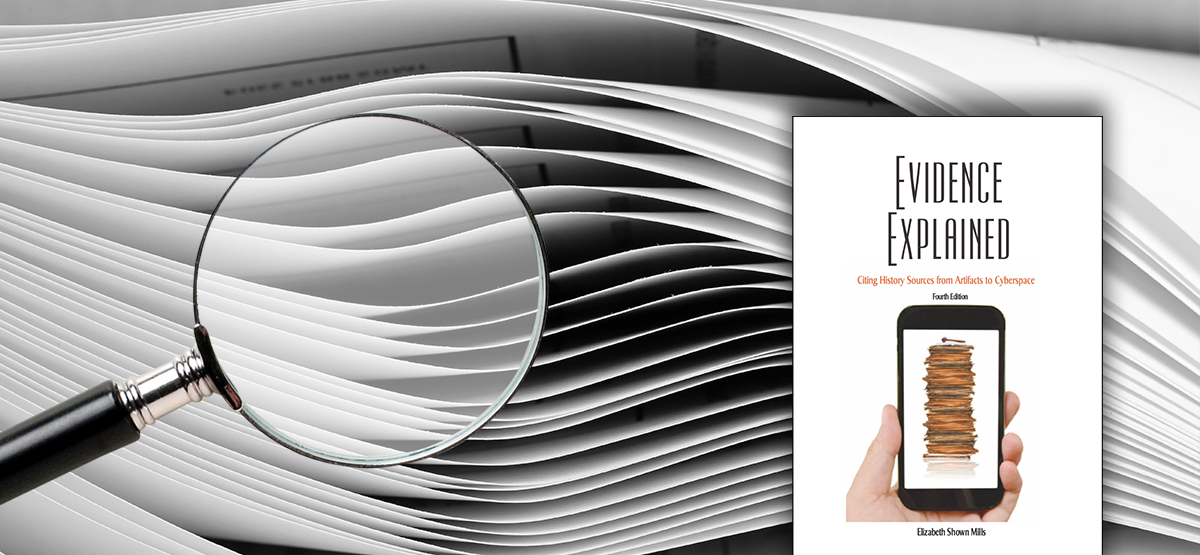
Citation Tips: Citing History Sources—Flexibility & Choices. By Elizabeth Shown Mills, CG, CGL, FASG
To celebrate the release of the new fourth edition of Evidence Explained: Citing History Sources from Artifacts to Cyberspace, EE’s author offers guidance drawn from the new edition. This is the fourth in our four-part series. ( View Part 1 | View Part 2 | View Part 3 )
Citations are flexible structures. They are not rigid formulas from which we dare not deviate lest the Citation Police take away our license to do research. When and how to deviate is the issue that puzzles most researchers.
The new fourth edition of Evidence Explained adds an entirely new chapter—Building a Citation—to help researchers understand the structure of citations and make appropriate choices.
Beyond any doubt, historical sources are complicated. Unpublished records and manuscripts are archived in complex ways. Images of manuscripts are accessed offline in now-antiquated forms. Others are delivered online through labyrinthian schemes. Citing these materials, as long cautioned at EE2.1, is an art rather than a science. Creating those citations, as cautioned at the new 3.1, requires flexibility. As with any type of structure, certain elements are essential while others are optional.
EE4’s new chapter will teach you the seven building blocks of a citation. It will then demonstrate how those building blocks can be selectively combined and layered to create a thorough identification for any type of historical source.
History researchers use three types of citations:
- First (Full) Reference Notes: for footnotes and endnotes, used at first citation to a source in a piece of writing; also used for document labels
- Subsequent (Shortened) Reference Notes: for repeated references, after a source has been cited in full
- Source List Entries: for a concise list of materials consulted
The First Reference Note is the default for history researchers. For notetaking, document labeling, and writing, the First Reference Note is where we record all details that identify the evidence for each assertion we make.
Chapter 3’s tutorial focuses on the First Reference Note. In each of the source-based chapters that follow, EE4 demonstrates how to apply that chapter’s basic templates to a myriad of historical sources. There, each citation example also shows how to shorten that First Reference Note to create Subsequent Notes and Source List Entries.
Yes, citations are flexible—but never whimsical. They are shaped by the nature and organization of the material itself. As a guide to citing history sources, Evidence Explained is committed to helping researchers understand the records they use, to cite them clearly, and cite them thoroughly enough that everyone can understand the likely reliability of each cited source.




